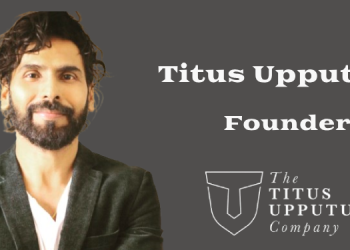I recently shared my experience of flying with Vistara, for the first time post its takeover by Air India, and many others echoed the same sentiment—Vistara, once known for its premium service, seems to have lost its charm. As gold tier frequent flyer, once I only chose Vistara despite other cheaper options. Sadly, I don’t think the story will stay the same in future.
What was once a brand associated with excellence, comfort, and attention to detail now feels like it’s slowly fading into mediocrity. This raises an important question: What happens to a brand when it gets taken over by another? And why do some takeovers lead to the demise of the very brand they are supposed to strengthen?
Takeovers are a double-edged sword. On one hand, they promise expansion, resources, and a bigger market share. On the other, they can lead to the erosion of what made a brand unique in the first place. The Vistara-Air India takeover isn’t the first instance where a once-loved brand started showing cracks after a merger. Let’s explore why some takeovers succeed while others seem to unravel the DNA of the acquired brand.
The Importance of Brand DNA : Every brand has a unique DNA—a combination of values, culture, and customer experiences that set it apart. When another brand takes over, it’s essential to understand this DNA and respect the consumer affinity it has built. However, the reality is often different. In many takeovers, the acquiring company is so focused on the bottom line and operational integration that they overlook the nuances that made the acquired brand special.
I was part of such a takeover when the Japanese giant Dentsu acquired Aegis Media. Dentsu recognized the reasons for its acquisition, primarily to gain a global presence outside of Japan. Instead of imposing its own systems and processes, Dentsu allowed Aegis to operate in its original way, slowly and carefully introducing management changes that did not disrupt the brand’s identity or way of working. This thoughtful approach helped maintain the essence of Aegis while gradually integrating it into Dentsu’s larger network.
Compare this with other instances where the brand’s DNA was lost during the transition. Jet Airways, once India’s most beloved airline, faltered after Etihad Airways’ stake acquisition. The focus shifted to operational synergies, and the service quality that Jet was known for started to deteriorate. The result was a dramatic decline, and eventually, Jet Airways ceased operations altogether, although the shutting down can be attributed to other reasons too.
Another example is when Kraft (the snack and food business renamed Mondelez in 2012) took over Cadbury in 2010. Cadbury was a beloved British brand, known for its rich heritage and distinct flavour. Consumers feared that Kraft, an American processed food giant, would dilute the authenticity of Cadbury’s products. Over time, it was reported, there were changes in recipe and production that left loyal customers feeling that the unique “Britishness” of Cadbury had been compromised. This is a classic case of a company not fully understanding the cultural and emotional value the brand held for its consumers.
What Goes Wrong?
1. Cultural Misalignment:
Often, the two companies have vastly different corporate cultures, leading to friction. The DNA of the brand being acquired can get overwhelmed by the corporate machinery of the acquirer. In Vistara’s case, the takeover by Air India may have imposed its legacy mindset on a brand that prided itself on a more modern, premium service.
2. Cost-Cutting Over Quality:
One of the immediate actions post-takeover is usually cost-cutting to justify the financial outlay. Unfortunately, this often translates into a dip in quality—whether it’s in the product itself, customer service, or employee morale. In aviation, subtle changes like fewer perks or worn-out seats can completely alter a customer’s perception, as was evident in my Vistara experience.
3. Loss of Consumer Trust:
The consumer base of the acquired brand often feels neglected if their favourite aspects of the brand are altered or eliminated. When customer trust is shaken, it’s difficult to win it back, as the takeover is often seen as a signal that things will only get worse.
The Takeover Success Stories – Not all takeovers fail.
Some brands have successfully navigated mergers by respecting the DNA of the brand they acquire. When Unilever took over Horlicks from GSK, they allowed the brand to retain its trusted position in the health and nutrition segment while modernizing its appeal for younger audiences. This carefully crafted balancing act helped Horlicks thrive under new ownership.
Closer to home, when Tata Group acquired Jaguar Land Rover, it allowed the British carmaker to operate with a degree of autonomy, respecting its identity as a luxury automobile manufacturer. The result was a turnaround, with JLR posting strong growth after the acquisition, adding a touch of design finesse to Tata Motors and showing how preserving a brand’s essence can lead to success.
Another example is Reliance’s acquisition of Hamleys. Reliance didn’t rush to impose its own way of operating. Instead, it respected Hamleys’ legacy and built on it to expand the iconic toy store’s presence in India. The company focused on keeping Hamleys’ nostalgic and high-end feel while tapping into the potential of the Indian market.
Lessons for the Future :
For any brand taking over another, the first priority must be to understand what made the acquired brand special. This includes:
a) Listening to customers and employees to understand the core values that drive loyalty.
b) Retaining the brand’s cultural essence, even if operational changes are necessary.
c) Prioritizing the customer experience over short-term cost-cutting.
In conclusion, a takeover should ideally strengthen a brand, not dilute it. For Air India and Vistara, the challenge is now clear—reclaim what made Vistara great. And for companies considering takeovers in the future, the lesson is simple: take the time to understand the brand’s DNA before making changes that could lead to its downfall.
















